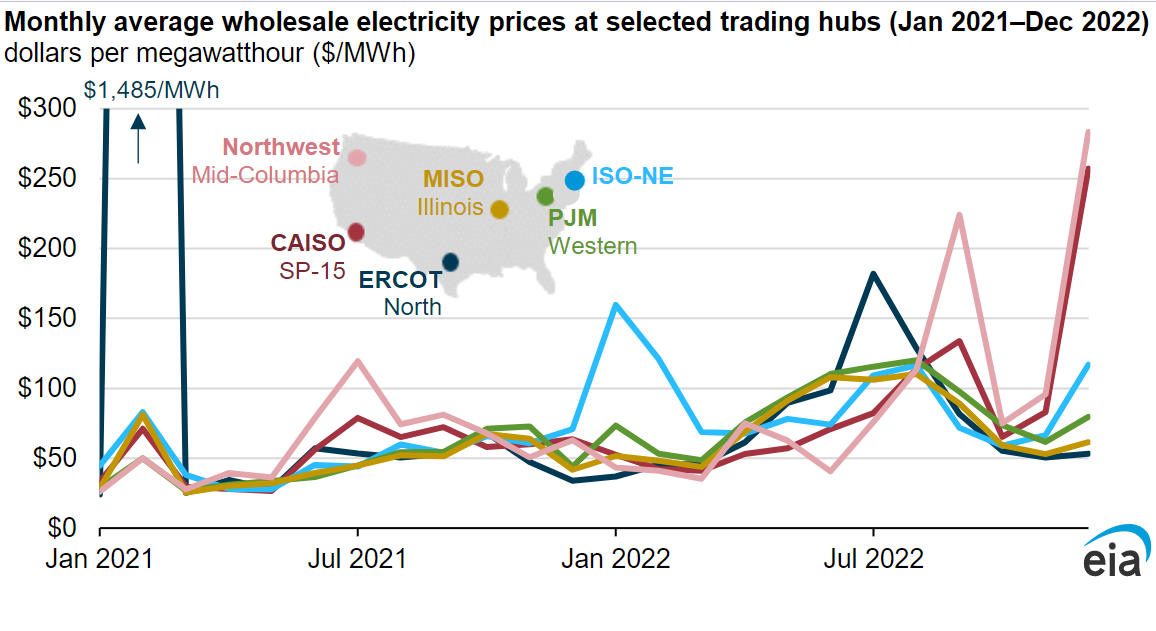Increasing Renewables Likely To Reduce Coal & Natural Gas Generation Over Next Two Years
In our latest Short-Term Energy Outlook, we expect that increased US power generation from new renewables capacity — mostly wind and solar — will reduce generation from both coal-fired and natural gas-fired power plants in 2023 and 2024. With the new solar and wind projects coming online this year, we … [continued]


